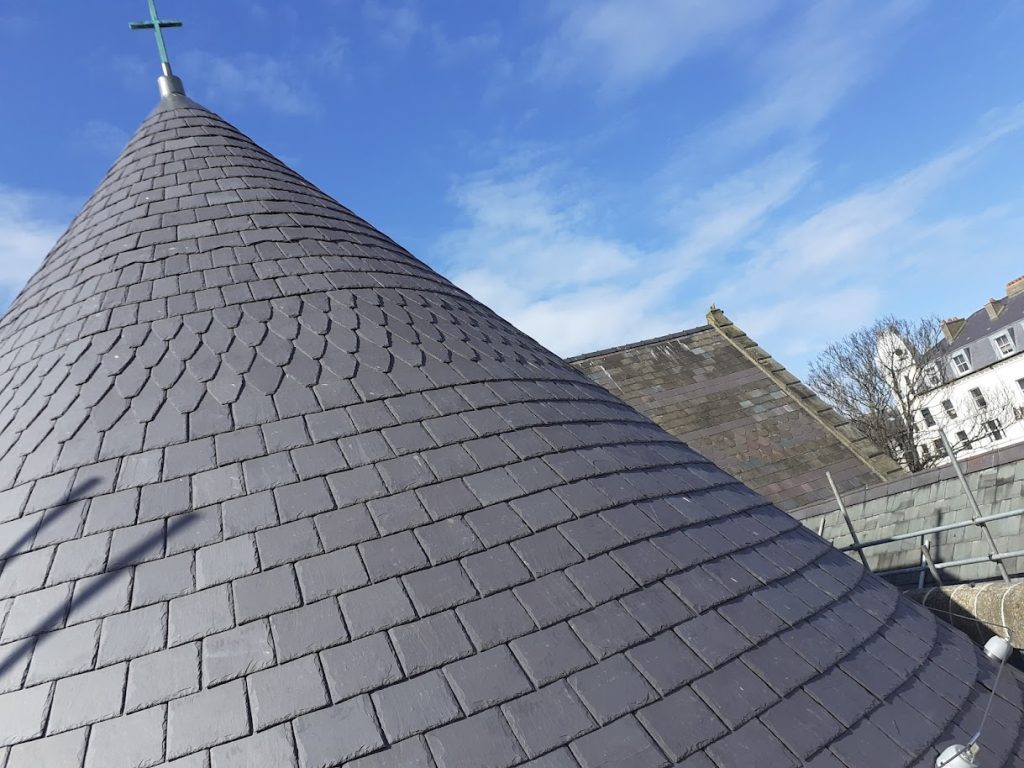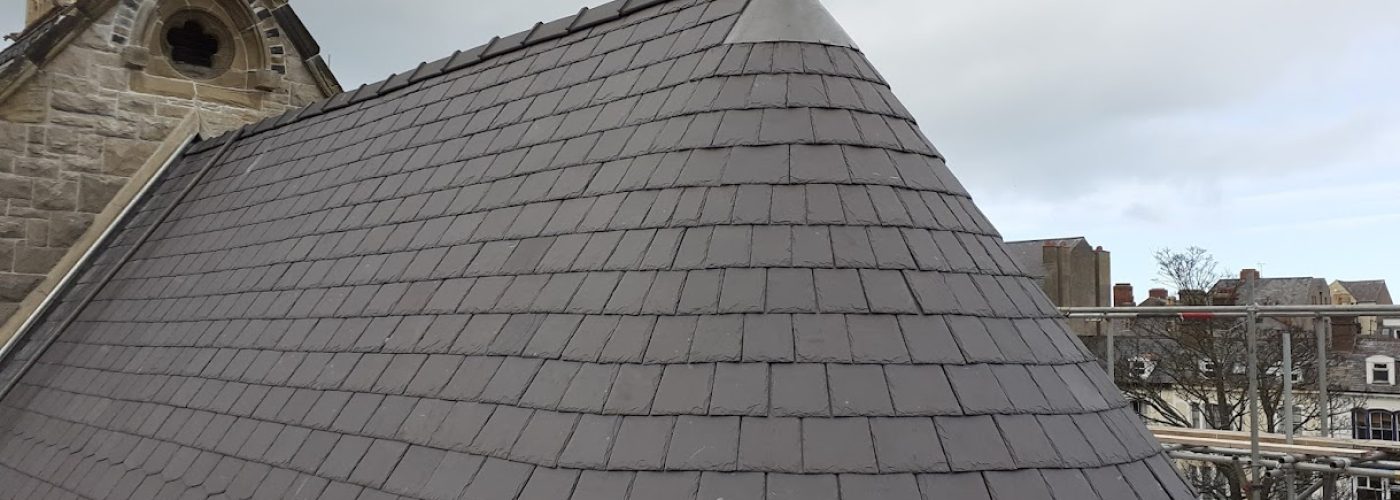Roofing slates by Welsh Slate feature on Holy Trinity Church in Llandudno.
A church in one of the first Conservation Areas in Wales has been given a new lease of life, thanks in part to Welsh Slate.
Some 130m2 of Welsh Slate’s roofing slates have replaced their 150-year-old predecessors on the roof of the chancel at the Grade II listed parish church of Holy Trinity in Llandudno which was consecrated in 1874.
Architects, surveyors and historic building consultants Kepczyk Pearce Sanderson, who specialise in the conservation and repair of listed and historic buildings and sites, had identified several significant repair issues with the fabric of the church as part of their Ezra Condition report of 2019 for the Diocese of Bangor.
Their brief to repair the high-level west tower masonry, and the apsidal roof, rainwater goods and lead-lined gutters of the chancel was met by considered repairs based on sound conservation practice and philosophy.
The reroof was carried out by specialist contractors Greenough & Sons using Welsh Slate’s standard shaped Penrhyn Heather Blues interspersed with four rows of scalloped and one row of chevroned slates midway up the pitch of around 60°.
Andrew Kepczyk said: “Where and when it is appropriate, we only ever specify Welsh Slate as its quality and durability is unsurpassed.”
Welsh Slate’s roofing slates are extremely sustainable, being guaranteed for 100 years and frequently lasting much longer, like those at Holy Trinity which had lasted almost 150 years. In addition, natural slate roofing can be recycled or repurposed at the end of its useful life as roofing material and is frequently used for multiple purposes in the garden.
Greenough & Sons took eight weeks on the reroof which featured open rafters to straight sections, with boarded and counter-battened curved sections at the far end.
Jon Greenough said: “There were heritage requirements, such as replicating the original details, combined with improving the roof’s expected life span. This required highly skilled, experienced slaters, and careful management and supervision to meet the architect’s exacting specification and requirements.
“But the Welsh Slate performed superbly. It gave the slaters confidence on what they were doing, knowing that the strength and durability of the product is second to none.”
A report by main contractor Grosvenor Construction said Llandudno’s position on the Creuddyn peninsular meant the church was constantly buffeted by harsh westerly winds which had damaged the building over time, making parts of the west tower unstable and requiring emergency works.
In addition to the masonry work on the tower, the chancel roof at the rear of the church had leaked and the whole roof required reslating.
“This was an interesting and complex job due to the curved form at the rear of the roof. Grosvenor collaborated with Greenough & Sons Roofing Contractors who used Heather Blue slates from Penrhyn quarry, widely believed to be some of the best slates in the world,” said the report.
As with much of Llandudno, the land for Holy Trinity was given by the Mostyn family, and the Mostyn estate architect George Felton was appointed to design the new church on a site in the town centre.
This was subsequently designated as one of the first Conservation Areas in Wales due to its significance as a splendid example of mid-Victorian town planning, characterised by beautifully detailed and elegant terraces of classically influenced buildings.


Building, Design & Construction Magazine | The Choice of Industry Professionals





